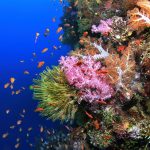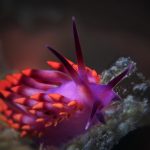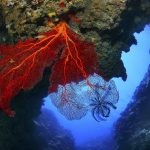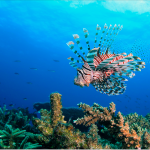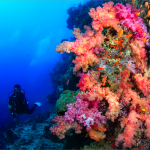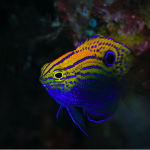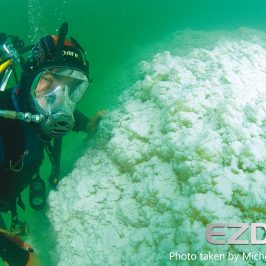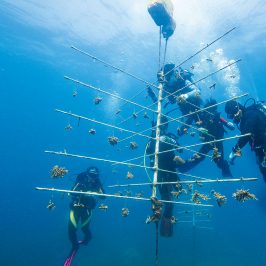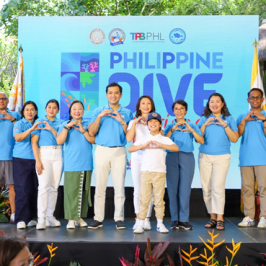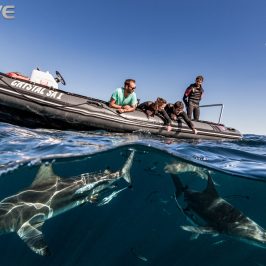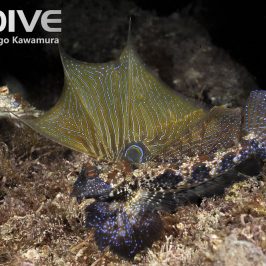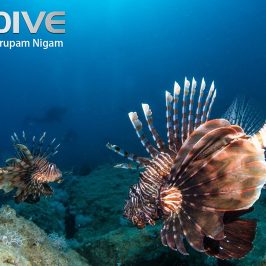The South Pacific Fijian waters – known as the soft coral capital of the world – makes for an unforgettable respite from the daily grind.
Text / Photo by Ken Thongpila
Fiji is an exotic holiday destination in the heart of the South Pacific with more than 300 islands. The major islands Viti Levu and Vanua Levu is where most of its population resides. Fiji is famous for shark feeding and soft coral diving, white sandy beaches and a pristine natural environment, with something for everyone.
Only four hours from Sydney to Nadi airport, I arrived without jet-lag and headed for the water straight on arrival. I took two weeks to discover some of the many dive sites in Fiji and for good measure, included a liveaboard to the mix.
I arrived a couple of days early just to get myself ready for the liveaboard, and to make sure all my diving gear and camera equipment arrives unscathed. It is important for me as I had encountered problems before when my luggage didn’t arrive on the same flight.
The 40m luxury Fiji Siren liveaboard departs Volivoli Beach resort located in the northernmost tip of Viti Levu, about 2.5 hours from Nadi airport. The Resort has comfortable, clean rooms all with ocean views, and its own dive operator. It is a great starting-point for dive gear and camera equipment checks as well as to reccce Fiji diving conditions.
From the resort I could see the Fiji Siren anchored and waiting for me to go and explore diving with her. The Fiji Siren is a 40 meter luxury liveaboard with a maximum of 16 divers on each trip. The 8 large air-conditioned cabins are luxurious twin or double rooms with ensuite bathroom and hot water. The Fiji Siren has designated indoor and outdoor workstations with charging points and large storage drawers, easy and convenient for every diver with a camera. There is a large dive deck with 12L tanks and nitrox.
My 10-day journey began with “Bula” (or “welcome” in Fijian) and the crew played guitar and sang their hearts out to welcome guests. The crew director Rani had a good sense of humour which kept everyone engaged and entertained on the trip.
Fiji is known as “soft coral capital of the world” with nutrient-rich currents that support more than a thousand species of fish and several hundred types of coral and sponges. The 10-day voyage covered Bligh Waters, Vatu-I Ra Passage, Namena Marine Reserve, Wakaya, Gau, Koro and Naigani Islands, including Taveuni Island where the famous Great White wall dive site is.
With waters around 25-26°C and a visibility of more than 15m, the dive sites enjoy currents ranging from barely perceptible to very strong. It is the presence of these nourishing currents that make diving in the Fiji Islands so stunning: vibrant soft corals and healthy hard corals, lots of small tropical fish abuzz around coral heads, turtles, schools of barracuda, schools of Jacks and many reef sharks make their appearance by the throngs. For macro life lovers, there are nudibranchs and a myriad of fish varieties
My favorite dive sites in Fiji
- Mellow Yellow, Vatu-I Ra is named for the huge abundance of yellow soft corals. It is also where I spent half of my time watching curious juvenile gray reef sharks swimming at close quarters with me, and schools of barracuda and turtles.
- Chimneys at Namena Island consist of three large pinnacles extending down from 3m to 25m, and covered with soft corals and crinoids along with countless anthias adding even more color to the reef.
- The Nigali Passage, Gau Island is a narrow cut in the surrounding barrier reef which attracts schools of pelagic fish like barracuda and trevally jacks by the numbers. Nigali is also the site where Fiji Siren conducts their shark feeding attraction, where divers hang out along the channel for most of the dive, to watch the adrenaline-packed showdown of brandished jaws and predatory action adventure. The dive concludes in a drift dive towards the shallow lagoon at the end of the channel.
- Rainbow Reef, Taveuni consists of several bommies adorned with a great array of soft corals in an array of stunning color, hence its namesake. Also, this dive site has one of the strongest currents on this trip; the nutrient-rich waters have injected the most magnificent and colorful coral blooms.
- The Great White Wall, Taveuni is the most famous dive site in Fiji with almost 95% of the terrain covred in a bluish-white hue. It is one of those dives that you must time your visit for its current and tidal changes, because the right tide would lend an amazing and unique experience to experience the dramatic coral bloom whitewall effect.
Guests were treated to an unexpected delight with a visit to Somosomo village in Taveuni. I had been to some local villages on previous visits to Fiji before, but most of them were rather touristy. But in Somosomo, it seemed like everyone in the village came out of their homes to entertain us in the community hall. They presented a welcome dance and we started talking and drinking kava (a brown concoction made from the root of the kava plant). The very authentic local visit lasted around two hours and made me realize how genuine and welcoming Fijian people are. It was a wonderful experience arranged by Fiji Siren that would keep fresh in my mind’s eye for a long time to come.
Getting there:
Fiji Airlines is the national carrier with direct flights from Australia, New Zealand and Hong Kong.
Best time to dive:
All year round with the best conditions from April through October for scuba diving with water temperatures around 25-26°C. A 5mm wetsuit is ideal. From November to March, the water temperature rises to around 28-30°C, and this time, a 3mm suit would suffice. The rainy season is December to March with the risk of cyclones.
Visa:
There are 107 countries and territories which do not require a visa to Fiji for visits up to four months, and this includes nationalites from Australia, New Zealand, China, Hong Kong and Singapore.
Language:
The traditional language is Fijian. English is also commonly spoken.
Currency:
1 US Dollar = 2.08 Fijian Dollar. Most major credit cards like Visa or Master Card are widely accepted. Tipping on the liveaboard is voluntary.
Electricity:
Electric appliances use 220V – 240V with two- or three- pin plugs similar to those of Australia and New Zealand. But Fiji Siren uses twin round pin plugs on a voltage between 220V – 240V, European standard.
Dive Operator
Volivoli Beach Resort Fiji – www.volivoli.com
Fiji Siren Liveaboard – www.sirenfleet.com/liveaboards/fiji-siren/

